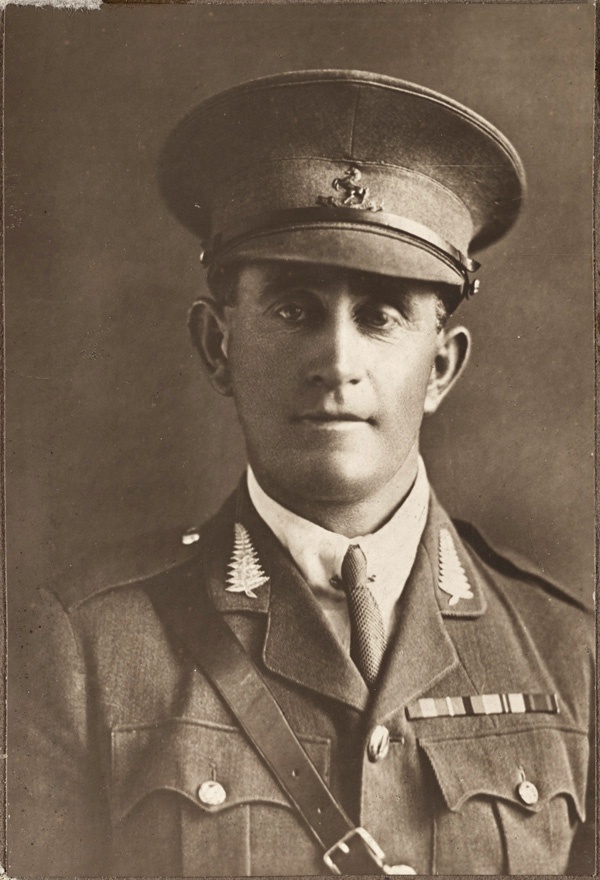
Ivanhoe Edward Baigent, No. 22618
6th Squadron, Wellington Mounted Rifles Regiment
Died of wounds, 14 November 1917
Born in Nelson in 1878, Ivanhoe Edward Baigent was one of Ann and Arthur Baigent’s 10 children. He grew up in nearby Wakefield and was educated at Waimea Boys’ High School. The Baigents were a prominent settler family with strong ties to the timber industry and Ivanhoe took up the family trade, working as a sawmiller in the Wairarapa region and the Akatarawa Forest north of Wellington.
Ivanhoe was also an experienced soldier. A former member of the volunteer Pahiatua Mounted Rifles, he had fought in the South African War and received a Distinguished Conduct Medal for rescuing a wounded comrade under heavy fire. Like many veterans of South Africa he chose to fight again in the First World War. In February 1916 he enlisted and became a corporal with the Wellington Mounted Rifles. By the time he left New Zealand in early 1917 he had been promoted to second lieutenant.
At the start of August 1917, Ivanhoe joined his regiment on the southern border of Palestine, where the New Zealand Mounted Rifles Brigade was part of an Egyptian Expeditionary Force fighting the Ottoman Army. The next three months were spent patrolling the area and making preparations for a third assault on Gaza, the gateway to Palestine. After the town was captured at the beginning of November, the New Zealanders advanced north along the coast in pursuit of the retreating Ottoman Army.
On 14 November the New Zealand Mounted Rifles Brigade encountered an Ottoman force entrenched on a ridge south of the village of Ayun Kara. The fight that followed was fierce and while leading his men forward along the ridge Ivanhoe was shot in the abdomen. He was taken to a field ambulance but died soon after from his wounds. He was one of at least 40 men killed in the day’s fighting, among the highest casualties suffered by the New Zealanders in a single battle during the Middle East campaign.
After the battle, the local Jewish community erected a memorial next to the cemetery for the New Zealanders who died in the fighting at Ayun Kara. The memorial no longer stands and the cemetery was later moved, but Ivanhoe’s name endures on the war memorial in his home town, Wakefield, while his body now rests at Ramleh War Cemetery in Israel.
Further information
Auckland War Memorial Museum Online Cenotaph record - Ivanhoe Baigent
Commonwealth War Graves Commission record - Ivanhoe Baigent
NZ units in South Africa – embarkation database – Ivanhoe Baigent
'All Sorts of People', New Zealand Free Lance, 14 December 1901, p. 3
'Fighting in the Transvaal', Evening Post, 30 January 1902, p. 5
'Returning Members Sixth Contingent', Colonist, 19 May 1902, p. 3
'While Doing their Duty', Evening Post, 26 November 1917, p. 8
A.H. Wilkie, Official War History of the Wellington Mounted Rifles Regiment 1914–1919, Whitcombe & Tombs Ltd, Auckland, 1924

Community contributions